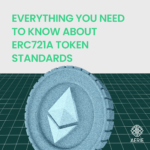“Layer 1 vs Layer 2 in Blockchain” Scalability

Blockchain tech has straight up changed the game for tons of industries. And they did that by providing decentralized, secure, and transparent solutions. As these blockchain networks blow up and get super popular, we’re facing a real challenge: scalability.
That’s where the cool kids step in, the developers and researchers, and they’ve come up with these Layer 1 and Layer 2 scaling solutions. In this article, we’re gonna break down what sets Layer 1 and Layer 2 apart, dive into the whole scalability thing, talk about why it’s so important, dig into the problems with Layer 1, and break down how both Layer 1 and Layer 2 scaling solutions do their thing. Let’s go!
What is Blockchain Scalability?
Alright, let’s talk about blockchain scalability. Scalability in the blockchain world is all about how well a blockchain network can handle a ton of transactions or data without compromising performance and losing its mojo. See, traditional blockchains like Bitcoin and Ethereum have this little hiccup where all the nodes in the network have to validate and record every single transaction. Sounds cool, right? Well, it has its limits.
As more people jump on the bandwagon and transactions start piling up, things start to slow down and get real jammed up. We’re talking bottlenecks, higher transaction fees, and just a whole lot of frustration. And that’s where scalability becomes a big deal.
Why is Blockchain Scalability Important?
Scalability is the key to getting blockchain tech to go mainstream. We need to make sure these networks can handle a massive influx of transactions and data without sacrificing speed, user experience, or security. Because let’s face it, if we want blockchain to take over the world, it’s gotta be able to handle the heat.
Current Layer 1 Issues
Let’s talk about the down-low on Layer 1 and its issues. So, Layer 1 is like the foundation of the blockchain, where all the important stuff goes down. Think Bitcoin and Ethereum, those are prime examples. But here’s the deal, these networks ain’t without their challenges when it comes to scalability.
First off, we got these block size and block time limits. Basically, they put a cap on how many transactions can be processed at once. So when the demand is high, things start to get all jammed up. It’s like rush hour traffic. Slow confirmations and higher fees, not exactly what we’re looking for.
And here’s the kicker, every node in Layer 1 has to agree on the whole transaction history. Sounds good in theory, but as the network grows, so do the storage and computational requirements. Scaling then becomes a real headache for decentralized networks.
How do Layer 1 Scaling Solutions Work?
The idea behind Layer 1 scaling solutions is to shake things up at the protocol level. We’re talking changes that make a big difference. Some approaches include increasing block sizes, slashing block times, or even introducing new consensus mechanisms.
For example, Bitcoin brought in Segregated Witness (SegWit), which separates transaction signatures from the main block. That way, more transactions can squeeze into a single block. And Ethereum, they transitioned from proof-of-work (PoW) to proof-of-stake (PoS). It’s all about higher throughput and energy efficiency.
But hey, these changes aren’t always a walk in the park. They often require major upgrades across the whole network and can face some resistance from the community.
How do Layer 2 Scaling Solutions Work?
Let’s break it down and talk about how Layer 2 scaling solutions get things done. Layer 2 is all about adding some extra layers on top of existing blockchains to make transactions faster and more scalable. These solutions keep the security of the underlying Layer 1 blockchain intact while offloading some of the transaction work to secondary layers. Pretty slick, huh?
One popular way to do this is by using off-chain payment channels. You got the Lightning Network for Bitcoin and the Raiden Network for Ethereum, for example. These channels let folks carry out multiple transactions without bogging down the main blockchain for every little interaction, thereby boosting scalability and reducing those fees.
Another trick up the Layer 2 sleeve is sidechains. These bad boys are like secondary blockchains that can talk to the main one. By moving certain activities off the main chain, they speed things up and make transactions more cost-effective. They settle things on the main chain periodically to keep things secure and decentralized.
Limitations of Layer 1 and Layer 2 Scaling Solutions
Let’s not forget that both Layer 1 and Layer 2 solutions have their limitations too.
Layer 1 solutions can be a real hassle. They often need major network upgrades, and not everyone is on board with that. Making changes like increasing block sizes or changing consensus mechanisms can get real tricky and mess with security and decentralization.
When it comes to Layer 2, they’re a bit more flexible, but they can bring their own set of challenges. Off-chain solutions like payment channels and sidechains sometimes make things more complex and can mess with how different parts of the system work together. Plus, you gotta lock up funds or commit to specific channels, which might affect usability and convenience.
What’s Next After Layer 1 and Layer 2?
As the industry keeps pushing forward, the brainiacs and tech wizards out there are digging into some seriously cool ideas to take scalability to the next level. They’re looking to boost throughput, security, and usability.
One sweet avenue they’re exploring is called sharding. It’s like breaking the blockchain into smaller partitions or shards that can handle transactions all at once, in parallel. This means multiple parts of the network can process transactions at the same time, and that’s a major boost to scalability.
But that’s not all, they’re also working on some layer-specific optimizations. Think improved consensus algorithms and data compression techniques. These tweaks can squeeze out even more scalability from the blockchain.
So, to wrap it up, blockchain scalability is key for this tech to go mainstream. Layer 1 and Layer 2 scaling solutions have their own ways of tackling the issue, but there’s a whole new world of innovation waiting beyond them. We’re talking fresh techniques, groundbreaking ideas, and even more mind-blowing scalability.









